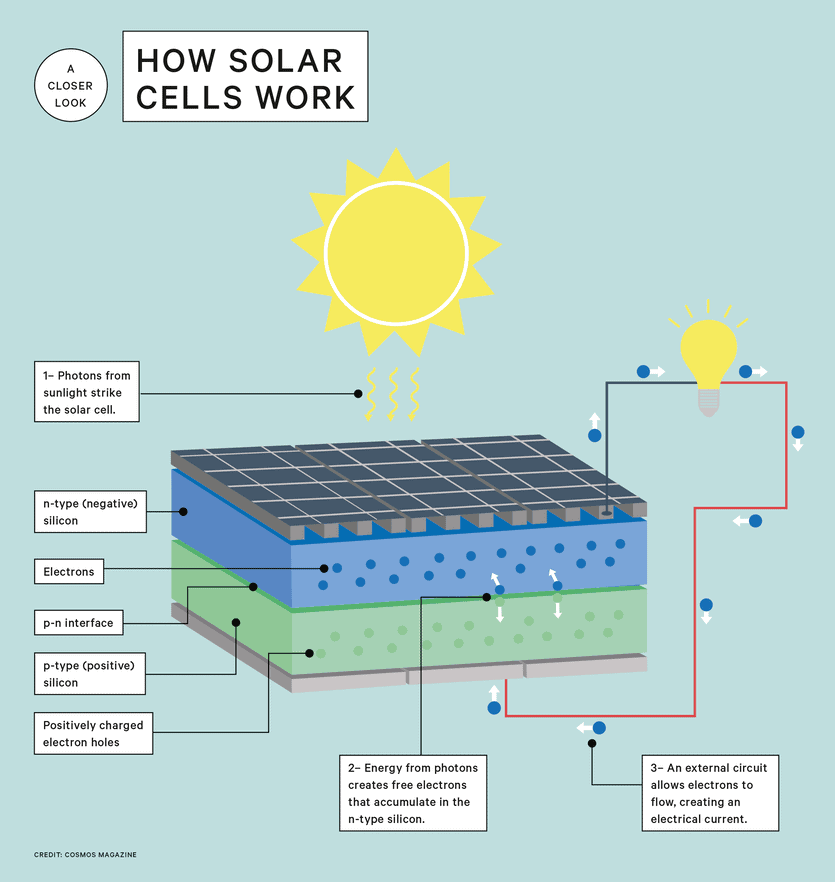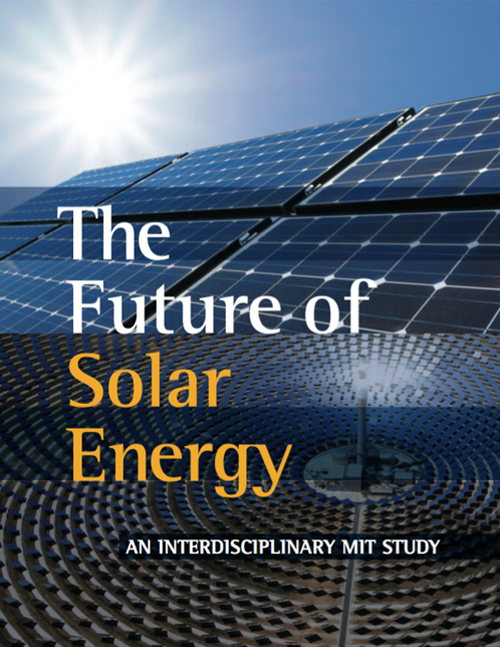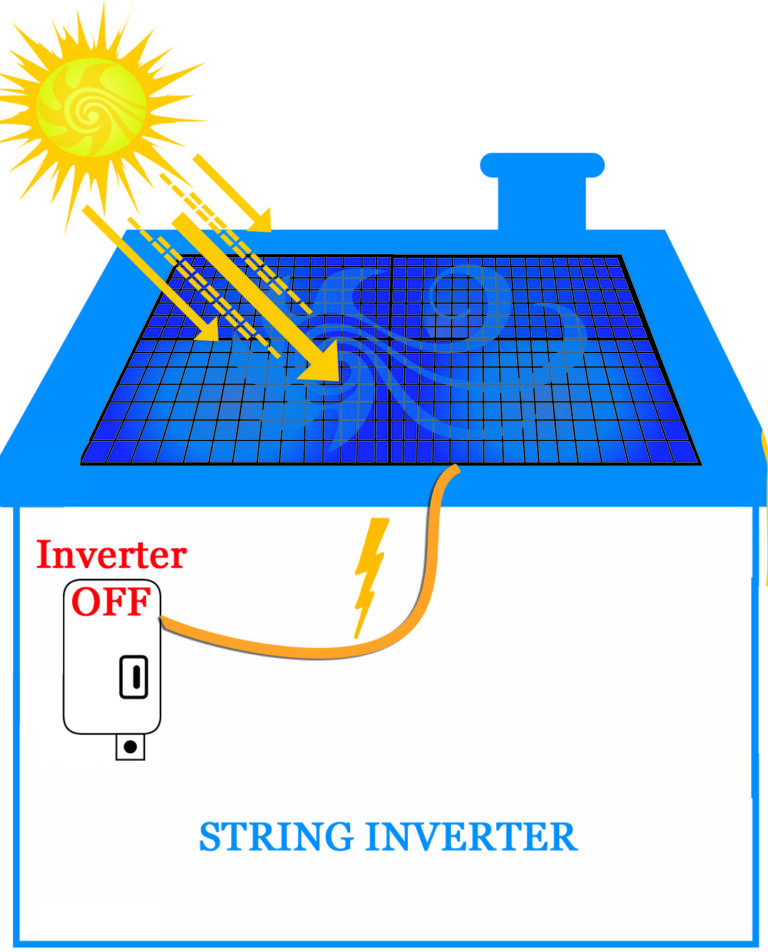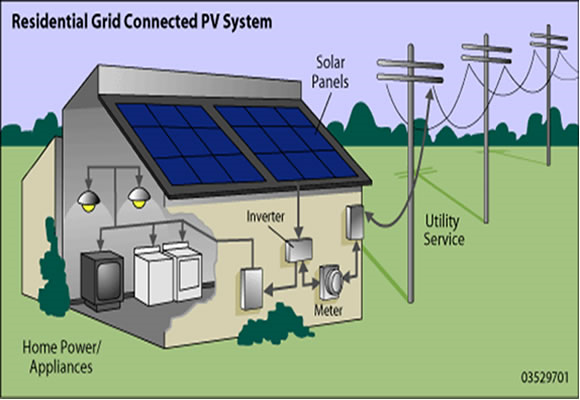How Do Solar Panels Convert The Sun’s Energy Into Electricity?
Welcome, young minds, to the fascinating world of solar energy! Today, we’re going to delve into the incredible process of how solar panels convert the sun’s energy into electricity. So, have you ever wondered how those shiny panels on rooftops can transform sunlight into power? Let’s find out together!
Imagine this: the sun, that giant ball of fire in the sky, is constantly sending out an immense amount of energy. This energy travels through space and reaches our planet as sunlight. But how do solar panels capture this energy and turn it into electricity that can power our homes and gadgets? It’s like a magical science experiment happening right under our noses!
Alright, brace yourselves, because here’s the mind-blowing secret: solar panels are made up of tiny cells called photovoltaic cells. These clever little cells are able to absorb sunlight and convert it directly into electricity. It’s almost like they have sun-catching superpowers! Are you ready to take a closer look at how these photovoltaic cells work their solar magic? Let’s dive in and explore the wonders of solar energy!
1. Sunlight hits the solar panels.
2. The solar cells in the panels absorb the photons.
3. This absorption creates an electric field.
4. The electric field causes electrons to flow, generating an electric current.
5. The current is then converted into usable electricity. This clean and renewable energy source helps reduce carbon emissions and save money on electricity bills. Harness the power of the sun!

How Do Solar Panels Convert the Sun’s Energy into Electricity?
Solar panels are an increasingly popular form of renewable energy that harnesses the power of the sun to generate electricity. But how exactly do these panels work? In this article, we will explore the intricate process of how solar panels convert the sun’s energy into usable electricity.
The Photovoltaic Effect – Converting Sunlight into Electricity
Solar panels utilize a phenomenon known as the photovoltaic effect to convert sunlight into electricity. At the heart of each solar panel are photovoltaic cells, also known as solar cells. These cells are made up of layers of semiconducting materials, typically silicon, which have unique electrical properties.
When sunlight, which comprises tiny particles of energy called photons, strikes the solar panel, the photons can be absorbed by the semiconducting material. This absorption causes the atoms in the material to release electrons, creating an electric current. The free electrons then flow through the cell, creating a flow of electricity.
Composition of a Photovoltaic Cell
A typical solar cell consists of several layers that work together to convert sunlight into electricity. The top layer is a thin, transparent sheet known as an anti-reflective coating. This layer ensures that maximum sunlight is absorbed by the cell by minimizing light reflection.
Below the anti-reflective coating is the p-n junction, the heart of the solar cell. This junction is formed by doping the silicon with impurities to create two distinct regions: the p-type and n-type. The p-type region contains positively charged particles, while the n-type region contains negatively charged particles.
When sunlight hits the p-n junction, the energy from the photons causes the release of electrons from the atoms in the n-type region. These electrons are then attracted to the p-type region due to the difference in charge. As the electrons move through the junction, they create a flow of electricity that can be harnessed for various applications.
Utilizing the Electric Current
Once the solar cells have converted sunlight into electricity, the next step is to make it usable. The electric current produced by the solar cells is in the form of direct current (DC). Since most appliances and electrical grids operate on alternating current (AC), an inverter is used to convert the DC electricity into AC.
The AC electricity can then be used to power homes, businesses, and other electrical devices. Excess electricity produced by the solar panels can be stored in batteries for later use when the sun is not shining. In some cases, surplus electricity can also be fed back into the electrical grid, earning credit or compensation for the solar panel owner.
Advancements in Solar Panel Technology
In recent years, there have been significant advancements in solar panel technology, making them even more efficient and cost-effective. These advancements include:
1. Monocrystalline and Polycrystalline Panels: Monocrystalline panels are made from a single crystal structure, making them highly efficient. Polycrystalline panels, on the other hand, are made from multiple crystal structures but are more affordable.
2. Thin-Film Solar Panels: Thin-film solar panels are made by depositing a thin layer of photovoltaic material onto a substrate. They are lightweight, flexible, and can be integrated into various surfaces such as roofs and windows.
3. Solar Tracking Systems: Solar tracking systems allow solar panels to move and follow the sun’s path throughout the day. This maximizes their exposure to sunlight, increasing their efficiency.
4. Energy Storage: Advancements in battery technology have enabled the storage of excess energy produced by solar panels. This stored energy can be used during times of low sunlight or in the event of power outages.
5. Efficiency Improvements: Researchers are constantly improving the efficiency of solar panels by enhancing the materials, reducing production costs, and developing innovative designs.
Benefits of Solar Panels
The adoption of solar panels for electricity generation offers numerous benefits, including:
1. Renewable Energy: Solar energy is abundant and inexhaustible, unlike fossil fuels, which are finite resources. Solar panels provide a sustainable and environmentally friendly alternative to traditional power sources.
2. Cost Savings: Installing solar panels can significantly reduce electricity bills over the long term. With advancements in technology and government incentives, the cost of solar panel systems has decreased, making them more accessible to homeowners and businesses.
3. Energy Independence: By generating their own electricity, solar panel owners can reduce their reliance on the electrical grid. This provides greater stability and security in times of power outages or fluctuations in energy prices.
4. Environmental Impact: Solar panels produce clean energy without contributing to air pollution or greenhouse gas emissions. By reducing reliance on fossil fuels, solar panels help combat climate change and improve air quality.
5. Long Lifespan: Solar panels are designed to withstand harsh weather conditions and have a long lifespan, typically ranging from 25 to 30 years. This makes them a durable and low-maintenance investment.
In conclusion, solar panels harness the power of the sun through the photovoltaic effect, converting sunlight into electricity through the use of photovoltaic cells. Advancements in solar panel technology have made them more efficient and affordable, offering numerous benefits including cost savings, energy independence, and environmental sustainability. As we continue to explore renewable energy sources, solar panels hold great promise for a cleaner and more sustainable future.
Key Takeaways: How Do Solar Panels Convert the Sun’s Energy into Electricity?
- Solar panels convert sunlight into electricity through a process called photovoltaic effect.
- Photons from the sun’s rays knock electrons loose from atoms in the solar panel’s semiconductor material.
- These freed electrons create an electric current that can be used as electricity.
- The current is then directed to an inverter, which converts it into a usable form of electricity.
- This electricity can then be used to power homes, businesses, and other electrical devices.
Frequently Asked Questions
Welcome to our FAQ section, where we answer some common questions about how solar panels convert the sun’s energy into electricity. Read on to learn more!
1. How do solar panels generate electricity?
Solar panels generate electricity through a process called the photovoltaic effect. The basic components of a solar panel are photovoltaic cells, made from semiconductor materials like silicon. When sunlight hits these cells, it excites the electrons, causing them to move freely. This movement creates an electric current, which can be captured and used as electricity.
Each solar panel consists of multiple photovoltaic cells connected in a series to maximize the electrical output. The generated electricity is then passed through an inverter, which converts it into a form that can be used to power homes, businesses, or stored in batteries for later use.
2. Do solar panels work on cloudy days?
Yes, solar panels do work on cloudy days, although their efficiency is reduced compared to sunny days. While clouds reduce the amount of sunlight that reaches the solar panels, they still allow some sunlight to pass through. Solar panels can generate electricity even with diffuse sunlight, but the output may be lower.
Newer solar panel technologies, such as thin-film solar panels, perform better in cloudy conditions compared to traditional crystalline silicon panels. Additionally, during periods of low sunlight, solar panels may rely on stored energy from batteries or draw electricity from the main grid to ensure a continuous power supply.
3. Can solar panels work at night?
No, solar panels do not work at night. Solar panels require sunlight to generate electricity through the photovoltaic effect. When there is no sunlight, such as during the night or in heavily shaded areas, the solar panel’s ability to produce electricity is diminished.
However, solar energy systems can still provide power during nighttime or low sunlight periods. They can be connected to the main power grid, allowing excess energy generated during the day to be fed back into the grid. At night, electricity can be drawn from the grid to fulfill energy needs. Alternatively, energy can be stored in batteries during the day and used at night.
4. Are solar panels expensive to install?
While the cost of solar panels has decreased significantly over the years, the upfront installation cost can still be relatively high. The total cost depends on various factors, including the size of the solar system, quality of materials, and installation requirements.
However, it’s important to consider the long-term savings and benefits of solar panels. Solar energy can reduce or eliminate monthly electricity bills, and in many cases, excess energy can be sold back to the grid. Additionally, there may be tax credits, incentives, and financing options available that can help offset the initial installation costs.
5. Are solar panels environmentally friendly?
Yes, solar panels are considered an environmentally friendly source of energy. Unlike fossil fuels, solar energy does not produce harmful greenhouse gas emissions or contribute to air pollution. It is a clean, renewable energy source that helps combat climate change and reduce reliance on non-renewable resources.
Additionally, solar panels have a long lifespan and require minimal maintenance, further reducing their environmental impact. As the demand for renewable energy grows, advancements in technology continue to make solar panels more efficient and sustainable.
Summary
Solar panels are amazing because they can turn sunlight into electricity we can use. When the sun’s rays hit the panels, the special material inside – called silicon – absorbs the energy and releases electrons. These electrons then flow through tiny wires in the panels to create an electric current. This current can power our homes and schools, making solar energy a clean and renewable source of electricity.
To make solar panels work effectively, they need to be placed in sunny areas to capture as much sunlight as possible. The more sunlight they receive, the more electricity they can generate. Solar panels are also a great way to reduce our reliance on fossil fuels and help protect the environment. So next time you see solar panels on a roof or in a field, remember that they are harnessing the sun’s energy and providing us with a cleaner and brighter future.




